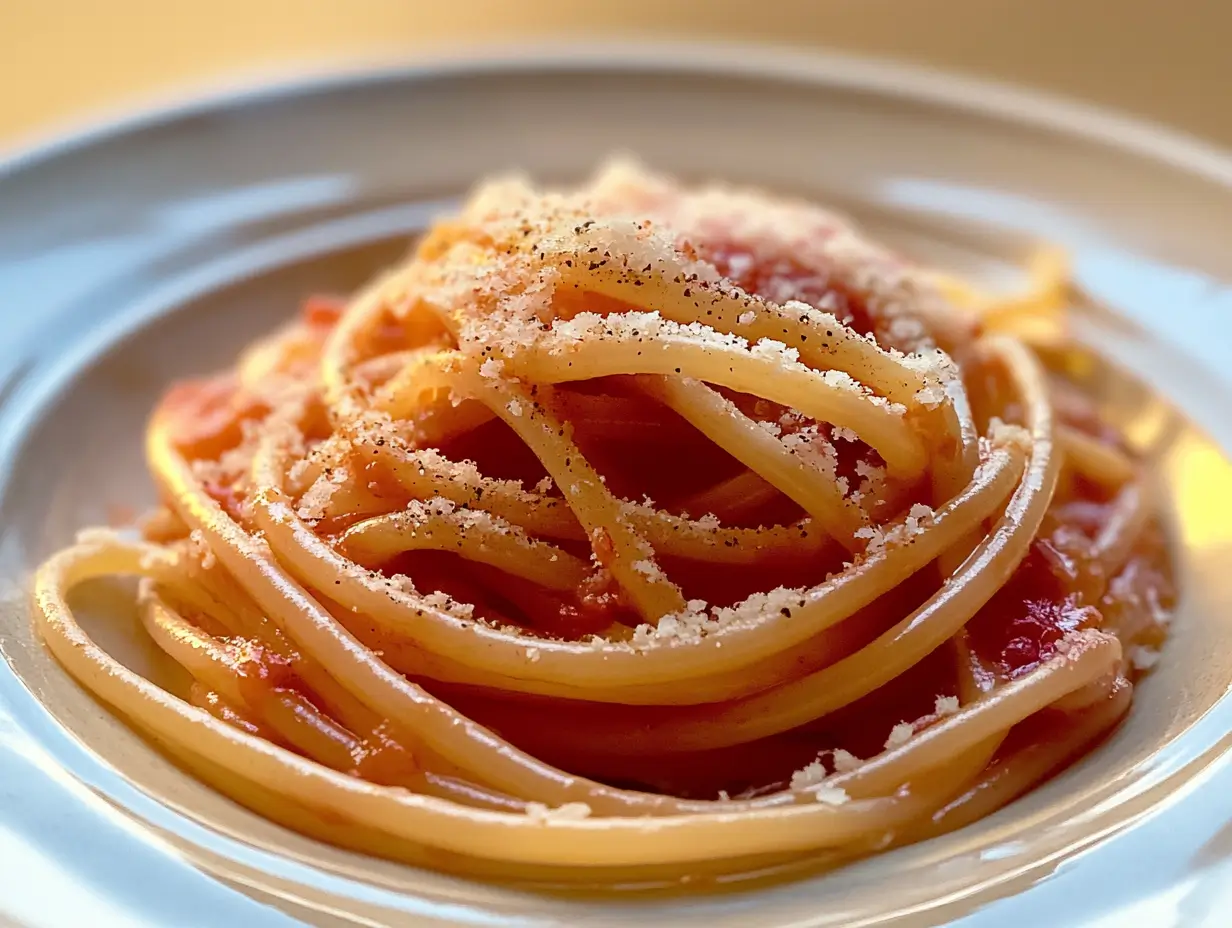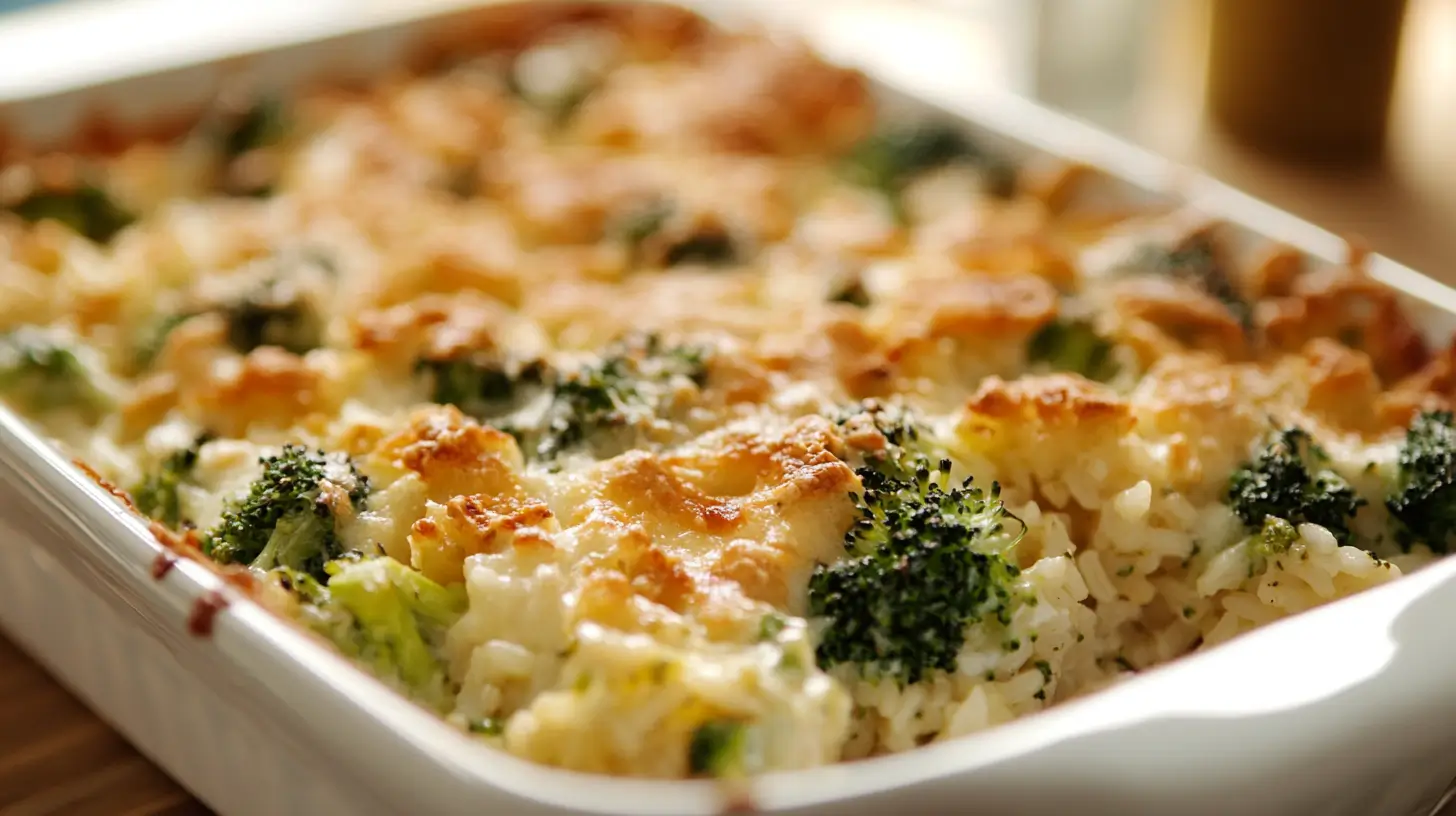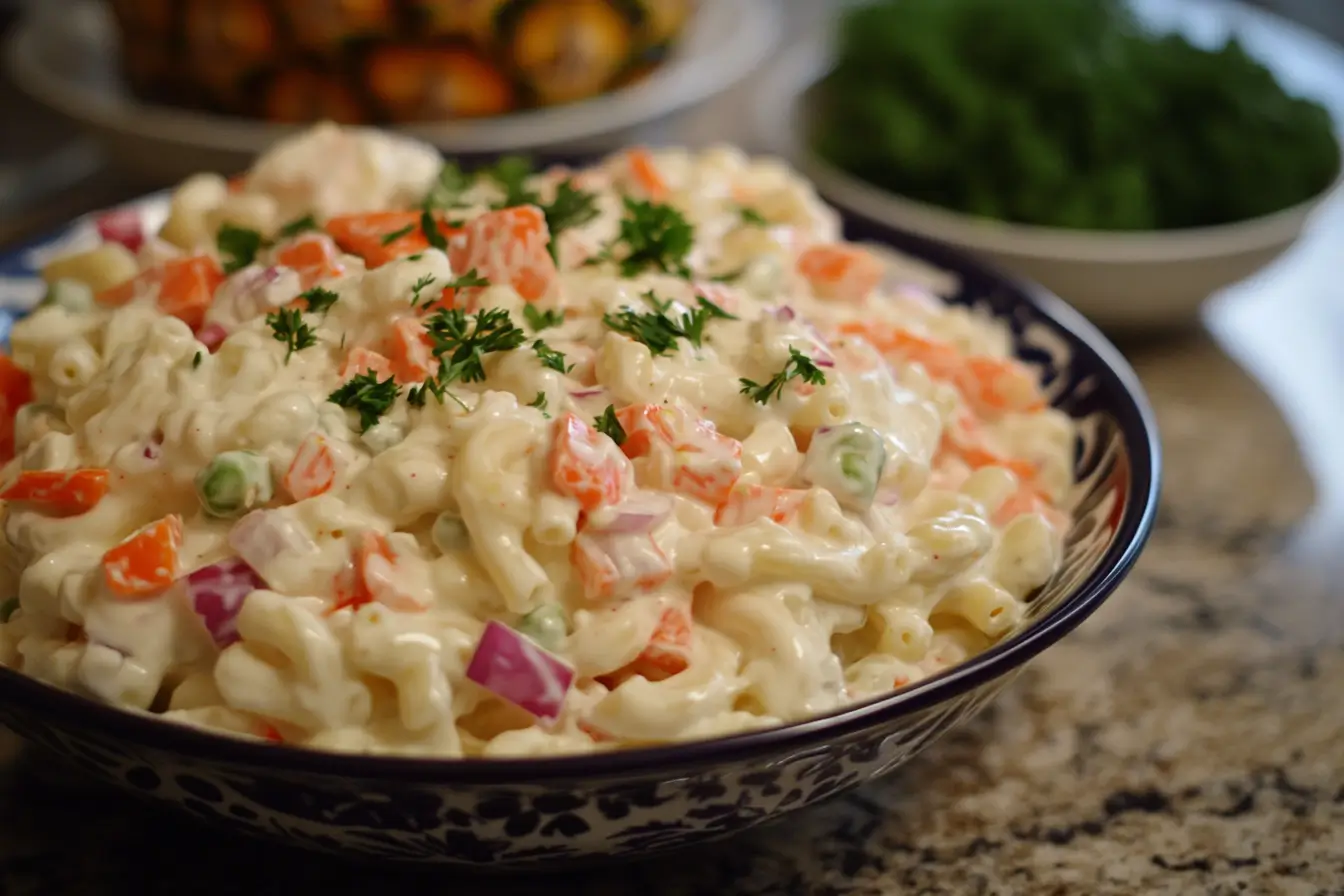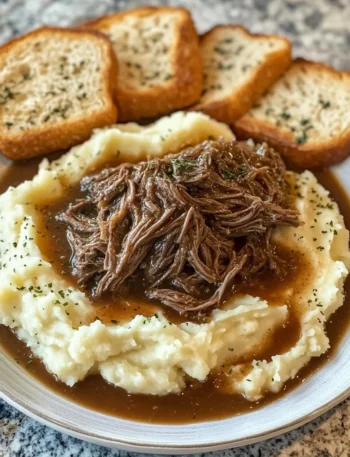Bucatini is a unique type of pasta known for its hollow, straw-like shape. Originating from Italy, this pasta is particularly popular in the Lazio region, which includes Rome. Bucatini is similar to spaghetti but with a twist—its thick, tubular form sets it apart, making it an interesting choice for various dishes. Its distinctive shape allows it to hold sauces better than many other types of pasta, making each bite a delightful combination of pasta and sauce.
History of Bucatini
The history of bucatini dates back to ancient Italy, where pasta has always been a staple in the diet. The name “bucatini” comes from the Italian word “buco,” meaning “hole,” which refers to the pasta’s signature hollow center. This pasta was traditionally made by hand, using a special tool to create the hole. Over time, as pasta-making techniques evolved, bucatini became more accessible, spreading across Italy and eventually around the world.
How Bucatini is Made
Bucatini is made from durum wheat semolina, which gives it a firm texture that holds up well during cooking. The dough is mixed and kneaded until it reaches the right consistency, then extruded through a machine that shapes it into long, hollow tubes. After extrusion, the pasta is cut to the desired length and dried. The drying process is crucial, as it helps the pasta maintain its shape and texture when cooked.
Culinary Uses of Bucatini
Bucatini’s hollow center makes it ideal for thicker sauces, as the sauce can flow through the tube, ensuring that every bite is flavorful. It pairs well with a variety of sauces, from simple tomato-based ones to more complex meat ragùs. Its robust nature also makes it suitable for dishes that involve baking, as it holds up well without becoming mushy.
Nutritional Benefits of Bucatini
Bucatini, like other types of pasta, is a good source of carbohydrates, which provide energy. It also contains protein and essential nutrients like iron and B vitamins. When combined with nutrient-rich sauces and ingredients, bucatini can be part of a balanced and nutritious meal.
Bucatini Recipe

Creating a delicious bucatini dish is straightforward and can be a delightful experience. Here is a simple yet mouth-watering recipe to try:
Ingredients:
- 400g bucatini
- 4 ripe tomatoes, diced
- 2 cloves garlic, minced
- 100g pancetta, diced
- 1/2 cup grated Pecorino Romano cheese
- 1/4 cup extra virgin olive oil
- Fresh basil leaves
- Salt and pepper to taste
Instructions:
- Boil the bucatini in a generously salted pot of water until it reaches an al dente texture. Drain and keep it aside.
- Warm the olive oil in a skillet over medium heat. Then add the pancetta and cook until it turns crispy.
- Add the garlic to the skillet and sauté for about 1 minute, until fragrant.
- Add the diced tomatoes to the skillet and cook until they soften and form a sauce, about 10 minutes.
- Toss the cooked bucatini into the skillet, ensuring it is well coated with the sauce.
- Stir in the grated Pecorino Romano cheese and season with salt and pepper to taste.
- Decorate with fresh basil leaves before serving.
Bucatini vs. Spaghetti
spaghetti and Bucatini are often compared due to their similar appearance, but they have distinct differences. Bucatini is thicker and has a hollow center, which allows it to hold sauces more effectively. This makes it an excellent choice for heartier dishes that benefit from a pasta that can carry more sauce. Spaghetti, on the other hand, is solid and thinner, making it ideal for lighter sauces and dishes where a delicate texture is desired.
Bucatini Amatriciana
Bucatini Amatriciana is a classic Italian dish that highlights the unique qualities of bucatini. This dish originates from the town of Amatrice and is loved for its rich, savory flavor.
Ingredients:
- 400g bucatini
- 150g guanciale (cured pork cheek), diced
- 1 can (400g) San Marzano tomatoes, crushed
- 1/2 cup grated Pecorino Romano cheese
- 1 small onion, finely chopped
- 1/4 cup white wine
- 1 tablespoon extra virgin olive oil
- Red pepper flakes (optional)
- Salt and pepper to taste
Instructions:
- Cook the bucatini in salted boiling water until al dente. Drain and set aside.
- In a large skillet, warm the olive oil over medium heat. Add the guanciale then cook until it becomes crispy.
- Add the diced onion to the skillet and sauté until it becomes translucent.
- Pour in the white wine and let it simmer until it reduces by half.
- Add the crushed tomatoes to the skillet and let the sauce simmer for about 10 minutes.
- Toss the cooked bucatini into the skillet, mixing well to ensure it is coated with the sauce.
- Stir in the grated Pecorino Romano cheese and season with salt, pepper, and red pepper flakes (if using).
- Serve immediately, garnished with additional cheese if desired.
Bucatini Carbonara
Bucatini Carbonara is another beloved Italian dish that showcases the versatility of it. Creamy, savory, and perfect as a comforting meal.
Ingredients:
- 400g bucatini
- 200g pancetta or guanciale, diced
- 4 large eggs
- 1 cup grated Pecorino Romano cheese
- 2 cloves garlic, minced
- 1 tablespoon extra virgin olive oil
- Freshly ground black pepper
- Salt to taste
Instructions:
- Cook the bucatini in salted boiling water until al dente. Keep one cup of pasta water then drain the rest of it.
- In a large skillet, heat the olive oil over medium heat. Add pancetta or guanciale then cook until crispy.
- Add the minced garlic to the skillet and sauté for about 1 minute.
- In a bowl, whisk together the eggs and grated Pecorino Romano cheese.
- Add the cooked bucatini to the skillet, tossing to coat with the pancetta and garlic.
- Remove the skillet from heat and quickly pour in the egg and cheese mixture, tossing vigorously to create a creamy sauce. Add reserved pasta water as much you neede to reach desired consistency.
- Season with freshly ground black pepper and salt to taste.
- Serve immediately, garnished with additional cheese and pepper if desired.
Frequently Asked Questions
What is the point of bucatini?
Bucatini’s primary advantage lies in its unique structure. The hollow center of bucatini sets it apart from other pasta types, particularly solid varieties like spaghetti or linguine. This hollow center allows it to capture and hold onto sauces in a way that no other pasta can. This means that each bite of bucatini offers a burst of flavor, as the sauce is not only coating the outside of the pasta but also filling the inside.
The texture of it is another point in its favor. Made from durum wheat semolina, bucatini has a firm, chewy texture that holds up well to hearty sauces and ingredients. This makes it ideal for dishes that require a robust pasta that won’t get lost in the mix. The thickness of it also contributes to a satisfying mouthfeel, offering a more substantial bite compared to thinner pastas.
Bucatini’s versatility is another reason for its popularity. It pairs well with a wide variety of sauces and ingredients, from simple tomato sauces to complex meat ragùs. Its ability to hold sauces makes it perfect for dishes that require a pasta that can stand up to bold flavors. Whether you’re making a traditional Italian dish or experimenting with new recipes, bucatini is a pasta that can adapt to many culinary needs.
What is bucatini best for?
Bucatini shines in dishes that feature rich, hearty sauces. Its hollow center allows it to absorb and hold onto thick, chunky sauces, making each bite flavorful and satisfying. This makes it an excellent choice for classic Italian dishes such as Amatriciana and Carbonara, where the sauce plays a crucial role in the overall flavor of the dish.
In addition to traditional Italian dishes, bucatini is also ideal for baked pasta dishes. Its sturdy structure means it can hold up well during baking without becoming mushy. This makes it perfect for casseroles and other baked dishes that require a pasta that can maintain its shape and texture.
It is also a great choice for soups and stews. Its hollow center allows it to absorb the broth, making each bite rich and flavorful. The pasta’s firm texture means it won’t become overly soft, even after being cooked in a broth. This makes it a popular choice for hearty soups that require a substantial pasta.
Another advantage of it is its ability to pair well with a variety of ingredients. It complements both vegetable-based and meat-based sauces, making it a versatile choice for many different recipes. Whether you’re making a vegetarian pasta dish or a meat-heavy sauce, bucatini can adapt to the flavors and ingredients of the dish.
What’s the difference between bucatini and spaghetti?
Bucatini and spaghetti are often compared due to their similar appearance, but they have distinct differences. The most obvious difference is the shape. Bucatini is thicker and has a hollow center, while spaghetti is solid and thinner. This difference in shape affects how each pasta interacts with sauces and ingredients.
Bucatini’s hollow center allows it to hold onto sauces more effectively than spaghetti. This makes it an excellent choice for dishes that require a pasta that can absorb and hold onto thick, chunky sauces. The hollow center also means that each bite of it is filled with flavor, as the sauce is not only coating the outside of the pasta but also filling the inside.
Spaghetti, on the other hand, is better suited for lighter sauces. Its thin, solid structure means it can’t hold onto thick sauces in the same way that bucatini can. This makes it ideal for dishes that feature delicate, light sauces that don’t require a pasta that can hold a lot of sauce.
The texture of the two pastas is also different. Bucatini has a firm, chewy texture that holds up well to hearty sauces and ingredients. Spaghetti, on the other hand, has a lighter texture that pairs well with delicate sauces. This difference in texture means that each pasta is better suited for different types of dishes.
What is a substitute for bucatini?
If you find yourself without bucatini, there are several substitutes you can use, depending on the dish you’re making. The best substitute for it is another type of pasta that can hold onto sauces well. Here are a few options:
- Perciatelli: This pasta is very similar to bucatini, with a similar hollow center and thickness. It’s the closest substitute and can be used in any dish that calls for bucatini.
- Spaghetti: While it doesn’t have the hollow center of bucatini, spaghetti is a good substitute for dishes that feature lighter sauces. It’s widely available and can be used in a variety of recipes.
- Fettuccine: This flat, wide pasta is a good substitute for bucatini in dishes that require a sturdy pasta that can hold onto thick sauces. It’s particularly good in creamy sauces like Alfredo.
- Rigatoni: This tube-shaped pasta is a good substitute for it in baked dishes and hearty sauces. Its large, ridged surface helps it hold onto sauces well.
- Ziti: Another tube-shaped pasta, ziti is a good substitute for bucatini in baked dishes and casseroles. Its sturdy structure holds up well during baking.
Each of these substitutes has its own unique qualities, so the best choice depends on the dish you’re making and the ingredients you’re using. While they may not have the exact same texture and flavor as bucatini, they can still create delicious and satisfying dishes.
Conclusion
Bucatini is a versatile and unique pasta that brings a lot of character to any dish. Its hollow center and firm texture make it ideal for a variety of sauces and cooking methods. Whether you’re making a traditional Italian dish or experimenting with new recipes, bucatini is a pasta that can adapt to many culinary needs. By understanding its history, culinary uses, and nutritional benefits, you can appreciate the many ways this pasta can enhance your meals. From classic dishes like Bucatini Amatriciana and Bucatini Carbonara to creative new recipes, the possibilities with it are endless.









